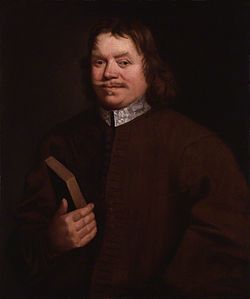Analysis of Upon The Whipping Of The Top
John Bunyan 1628 (Elstow, Bedfordshire) – 1688 (London)
Tis with the whip the boy sets up the top,
The whip makes it run round upon its toe;
The whip makes it hither and thither hop:
'Tis with the whip the top is made to go.
Our legalist is like unto this top,
Without a whip he doth not duty do;
Let Moses whip him, he will skip and hop;
Forbear to whip, he'll neither stand nor go.
| Scheme | ABAB AXAB |
|---|---|
| Poetic Form | Quatrain (50%) |
| Metre | 1101011101 0111110111 011110011 1101011111 101111011 0101111101 1101111101 111110111 |
| Closest metre | Iambic pentameter |
| Characters | 339 |
| Words | 72 |
| Sentences | 4 |
| Stanzas | 2 |
| Stanza Lengths | 4, 4 |
| Lines Amount | 8 |
| Letters per line (avg) | 31 |
| Words per line (avg) | 9 |
| Letters per stanza (avg) | 124 |
| Words per stanza (avg) | 35 |
Font size:
Submitted on May 13, 2011
Modified on March 14, 2023
- 21 sec read
- 408 Views
Citation
Use the citation below to add this poem analysis to your bibliography:
Style:MLAChicagoAPA
"Upon The Whipping Of The Top" Poetry.com. STANDS4 LLC, 2024. Web. 28 Apr. 2024. <https://www.poetry.com/poem-analysis/22184/upon-the-whipping-of-the-top>.


Discuss this John Bunyan poem analysis with the community:
Report Comment
We're doing our best to make sure our content is useful, accurate and safe.
If by any chance you spot an inappropriate comment while navigating through our website please use this form to let us know, and we'll take care of it shortly.
Attachment
You need to be logged in to favorite.
Log In